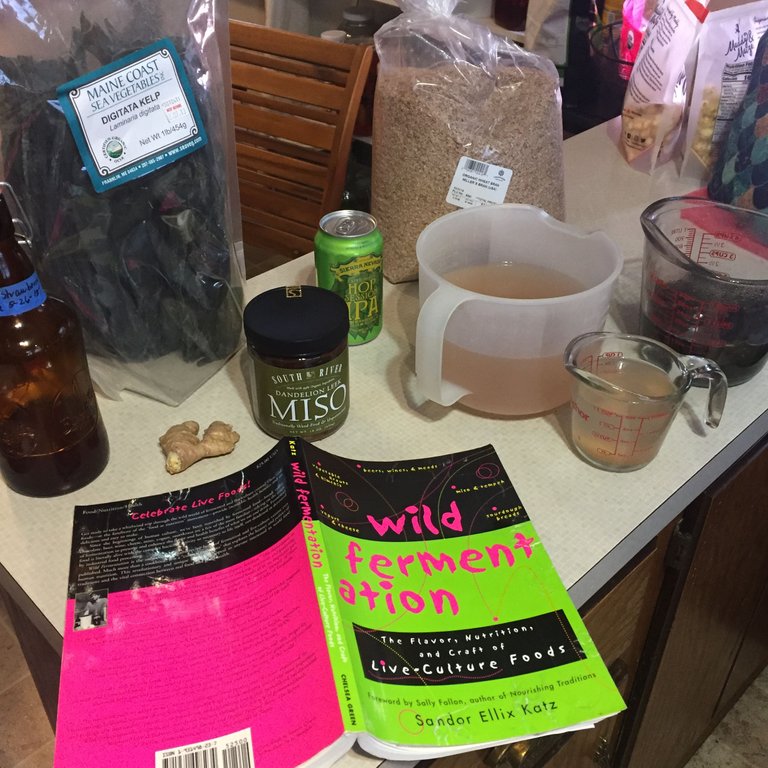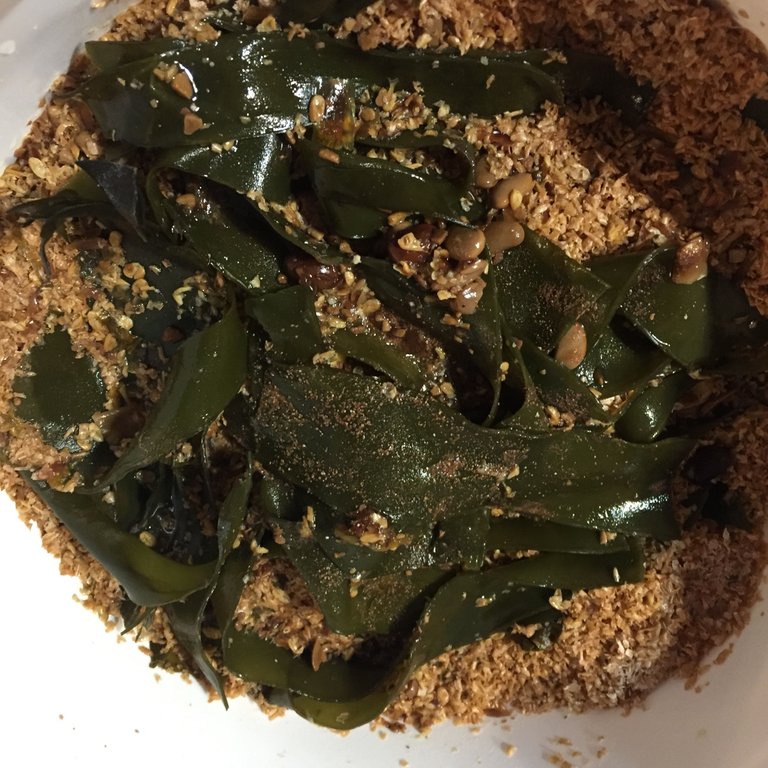Nukazuke are a class of Japanese pickles that have been fermented in damp, cultured rice bran. They're sometimes delicious and always interesting. Where I live, rice bran is hard to obtain, and finely powdered (which I think might be the wrong form-factor). But wheat bran is abundant, cheap, and in a much larger grain. I've had better luck fermenting in fusuma than in nuka because of this. I've done this a few times over the last ten years, but it's been a while and I just started a new pot last night. I'll probably blog about this a few times over the coming few weeks as it takes some time to get going.
I first read about this process in Wild Fermentation. I tried it and liked it and then I read more in other sources. It turns out that Sandor's suggested methods are a little off from authentic tradition. However, I've had the best luck with his overly damp, wheat-bran method, so that's the source I'm going back to this time to see if that's how it works out again.
I bought a big sack of wheat bran from my local co-op, got the other stuff together from my pantry, and started toasting the bran. This step is just for flavor, and kind of a pain in the ass, so if you skip it, I'll understand. I do it in medium cast-iron wok:
Using the largest burner, but the lowest flame, I put a thin layer of bran in the wok, spread it out to get as much in contact with the iron as possible, and let it get hot. It browns slightly and smells nutty. Then I move that out to my "crock" (a food-safe plastic bucket in this case) and toast the next batch.
Once that's all prepared, I mix in some brine, beer, wine, miso, ginger, kombu, kimchi and whatever else (garlic and mustard powder are common, but not used this time) and thoroughly mix it up with my hands to get rid of pockets of dry bran.
At this point, I have fusumadoku (a pot of the medium, normally it's 'nukadoku' but I'm just subbing in fusuma for the nuka) but it is immature. So, for the next week or so, I'm going to bury two or three small vegetables in the medium and then replace them the next day. Vegetables are covered in bacteria, there are bacteria in the starters that I mixed in (the wine, miso, ginger, and kimchi, at least), and there are bacteria on my hands that are going in every day. Those bacteria will colonize the fusumadoku and spread throughout, acidifying the whole bucket, and outcompeting any pathogens that try to move in. Right now, the bucket has a carrot, a pepper and some dandelion greens. Tonight I'll swap them out for garlic and radish or whatever -- just to keep building the colony.
And I'll let you know how it progresses!



This is so interesting! Be sure to let us know how this project of yours is going.